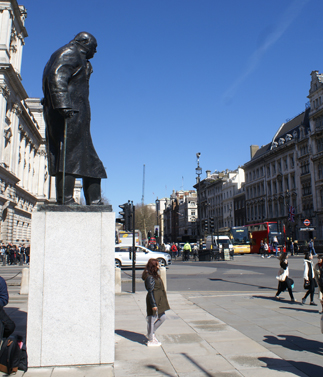The Security Industry Authority (SIA) recently moved, from Holborn in central London to Canary Wharf, to a ‘hub’, sharing buildings and services inside with other bodies. That’s part of a general central Government policy by the Cabinet Office, towards a network of Government Hubs – that a Government Estate Strategy 2018 document describes as ‘modern, innovative shared workspaces’ close to ‘excellent transport links. Our people will work flexibly, equipped with the latest mobile technology – great places to work and great ways of working’. It will require, in the document’s word, a ‘transformation’ that security is involved in; besides sustainability, smart and efficient working (or ‘agile working’) and the like.
That document for example looks ahead to a ‘Whitehall Campus’. “This will consist of no more than 20 efficient, fit-for purpose buildings, operating as a single entity with flexible space, shared services, and – where the work is not security sensitive – integrated security systems, including a common access pass.” The Government has already reduced the number of properties it owns in Whitehall. From 180 properties in central London in 2010, only 68 remain, and the aim is to go down to 20.
In Westminster, the document acknowledges, there are ‘many temporary security and crowd control measures’ in place. Proposed instead are ‘permanent solutions that align with the area’s heritage and public realm, while creating successful, safe and easily navigable places and spaces’. Funding for the physical security barriers to cover buildings and monuments will come from a number of Government departments and others. Put another way, that area between Buckingham Palace, Trafalgar Square and Parliament (pictured; the Churchill statue in parliament Square) will have ‘permanent security solutions that blend into the environment to create safe and easily navigable spaces’.
Some 11 locations for Government Hubs have been already identified across the UK, including Belfast, Cardiff and Edinburgh. Hubs, the document sets out, will bring cost savings; of £3.6 billion over 20 years, as the Government seeks the best possible deal. Central Government departments own and/or manage their own administrative estate – around 800 offices around the country. This fragmented ownership is inefficient and leads to silo working, according to the document. The plan is to cut that 800 to 200. More generally speaking, the Government wants to ‘work with industry to make it easier to host infrastructure on government and public sector sites’. On security in particular, the document says it’s important that standards are built into the estate and used as an enabler to modern working practices. “Government Hubs, as with all the commitments contained within this strategy, will therefore align with the Transforming Government Security (TGS) Programme. This is transforming the way that government delivers security via the requirement for all departments to report against minimum security standards from June 2018 and the creation of four Cluster Security Units that will develop and deliver a full range of security services (vetting, physical and cyber security) to departments by April 2020.”
Co-location isn’t only for the UK; the Foreign Office has two new co-locations in Minneapolis, in the United States, and Monterrey, Mexico, where Canada acts as host; and has a similar arrangement with the Netherlands, Germany and the EEAS (European External Action Service) in Dar Es Salaam.









